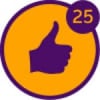Free Brain Donation



I have been trying to add another version of this on the AA site but the file is too large. So for now this will have to do. I reached out to AA and so far not much help. This is very important for all? If AA is successful, you will see the better one.
One of the best ways to advance research toward finding answers about neurologic disorders is through brain donation. There is currently an urgent need for people to donate their brains when they die, to continue the pace of breakthroughs in neuroscience.
The Brain Donor Project is an innovative not-for-profit that was developed to support the National Institutes of Health (NIH) in making available high quality, well characterized brain tissue for neurologic researchers. Our focus is on raising awareness of the critical need for this precious tissue and on simplifying the process of brain donation upon death.
More has been learned about the human brain in the last 20 years than in all of recorded history, but there is so much yet to discover. More than 50 million Americans suffer from a neurologic disease or disorder – that’s one in six of us. And the answers simply can’t come fast enough. You may not be aware that…
- Signing up to become an organ donor does not mean your brain is included. Separate arrangements need to be made for brain donation.
- Donating your body for anatomical study does not mean your brain will be used for neurological research. Again, separate arrangements are needed.
- People who have not been diagnosed with a neurological disorder are encouraged to donate as well. Control brains are just as valuable.
- Brain donation is not disfiguring – an open casket is still an option.
- There’s no additional cost to the family for brain donation.
Please consider making this precious gift. Visit braindonorproject.org to learn more and to begin the process of arranging for brain donation. Thank you for considering this invaluable gift as a way to advance science.
Sincerely,

Tish Armentrout Hevel
CEO/Founder
The Brain Donor Project
Comments
-
Thank you, Michael. I didn't know there would need to be preplanning done. Great resource.
Jackie
0 -
Yes, pre-planning is very necessary. My husband donated his brain as part of a research project at Northwestern University in Chicago. The brain had to be harvested with in a certain number of hours after death. Also, special preservatives have to be used so as not to contaminate the brain tissue for research. I was given a number to call at the time of death. The university sent a vehicle to pick up the body. The body was returned to the funeral home 24 hours later. 3 months later we received a brain autopsy report. Very informative. Multiple types of disease - Alzheimer’s, TDP 43 pathology, hippocampal atrophy, to name a few. He had a very sick brain!0
-
Yes, we had to pre-plan for my husbands brain donation also. He died last month. His was through USC Research and it was exactly what Caring4two experienced. My DH passed in the middle of the night and we called the number provided and they came at 3:30 in the morning to pick him up. The mortuary picked up his body three days later and once the study is done, I will receive the results by mail. One thing I wasn't prepared for was the different opinions from family members about brain donation. It was my husbands choice early in the disease and I was determined to honor his wishes.0
Commonly Used Abbreviations
DH = Dear Husband
DW= Dear Wife, Darling Wife
LO = Loved One
ES = Early Stage
EO = Early Onset
FTD = Frontotemporal Dementia
VD = Vascular Dementia
MC = Memory Care
AL = Assisted Living
POA = Power of Attorney
Read more
Categories
- All Categories
- 596 Living With Alzheimer's or Dementia
- 321 I Am Living With Alzheimer's or Other Dementia
- 275 I Am Living With Younger Onset Alzheimer's
- 16.9K Supporting Someone Living with Dementia
- 5.6K I Am a Caregiver (General Topics)
- 8.2K Caring For a Spouse or Partner
- 2.7K Caring for a Parent
- 225 Caring Long Distance
- 157 Supporting Those Who Have Lost Someone
- 17 Discusiones en Español
- 5 Vivir con Alzheimer u Otra Demencia
- 4 Vivo con Alzheimer u Otra Demencia
- 1 Vivo con Alzheimer de Inicio Más Joven
- 12 Prestación de Cuidado
- 3 Soy Cuidador (Temas Generales)
- 8 Cuidar de un Padre
- 23 ALZConnected Resources
- View Discussions For People Living with Dementia
- View Discussions for Caregivers
- Discusiones en Español
- Browse All Discussions
- Dementia Resources
- 8 Account Assistance
- 15 Help



